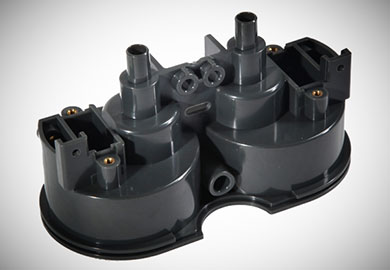
Over-molding is a process to add additional material such as thermoplastic elastomer plastic substrates so as to improve the aesthetics, handling characteristics, grip, impact resistance, environmental resistance, and so on.
Over-molding uses several molds to create a finished product. As one of the reliable and professional custom plastic mold manufacturers, we promise you high-quality injection molded parts.
A short cycle of moulding products
Because the melting plasticizing and flow modeling of the forming material are carried out in the cylinder and the mold cavity respectively, the mold can always be in the state of condensation so as to shorten the molding cycle.
Batch production of precision plastic injection moulding
When forming products made by injection molding, the mold must be locked before the melt is injected.
Low cost
One operator can often manage two or more injection molding machines, especially if the plastic moulded parts can be unloaded automatically.
Automatic control
The processes of plastic injection molding parts such as feeding, plasticizing, injection, mold opening, and release molding are completed by the injection molding machines.
Part material | PA+TPU |
Cavity | 1 |
Mould steel | 1.2343 |
Mould steel | 1.1730 |
Mould life | 100W |
Mould standard | HASCO |
Mould structure | 2 times molding |
Exporting country | France |
Leadtime | 5 weeks |
Mould quality customer satisfaction | 96% |
FAI pass rate | 99% |
Project cooperation service customer satisfaction | 98% |
When it comes to the over-molding process, an engineer injection puts a substrate out of the more rigid over-mold material. Then, the substrate of injection molded products is placed in an over-mold tool or over-mold cavity within the same tool. The molten over-molding material is then ejected into and around the substrate. After the molten material cools, the substrate and over-mold are chemically or mechanically bonded.
 Call us on:
Call us on:  Email Us:
Email Us:  Shengan Building A, Hengzeng Road Chang'an Town Dongguan City,
Shengan Building A, Hengzeng Road Chang'an Town Dongguan City,